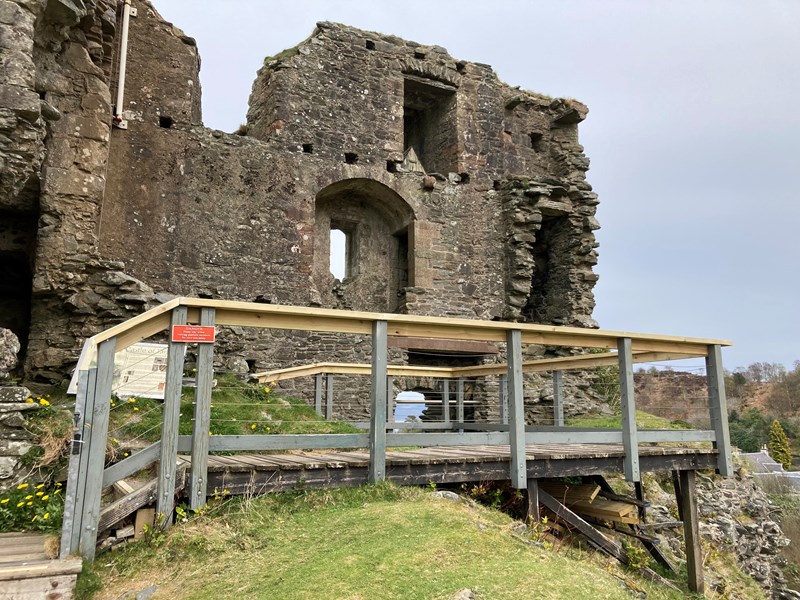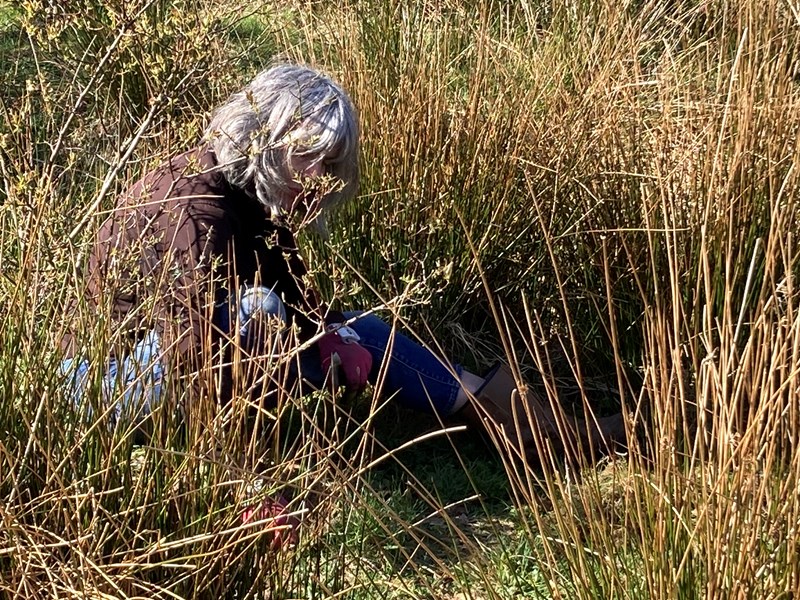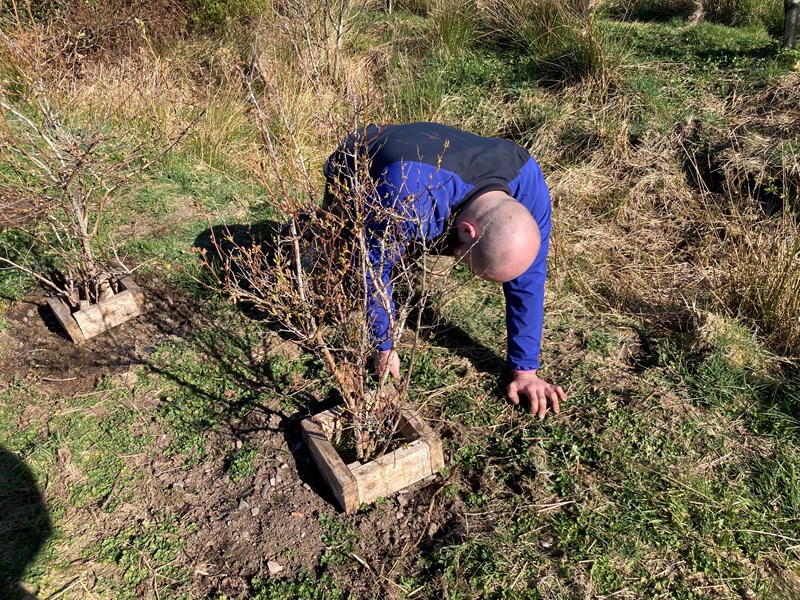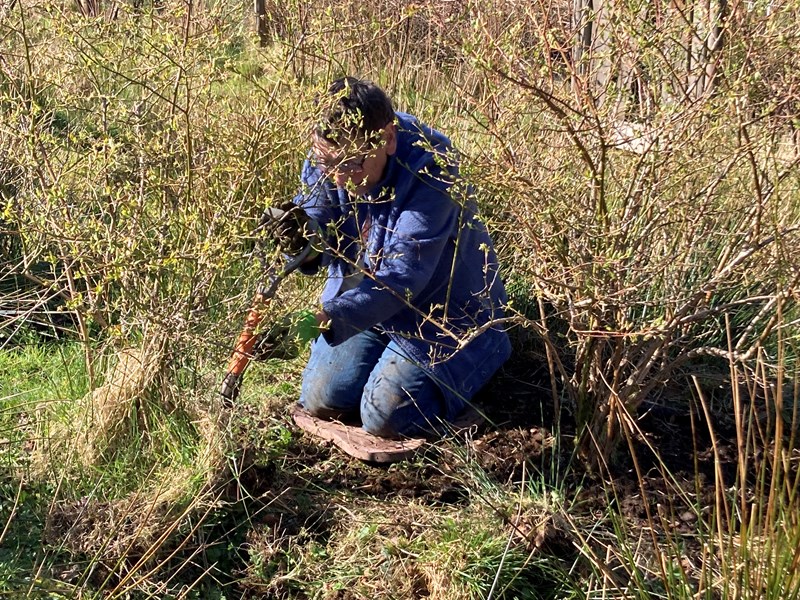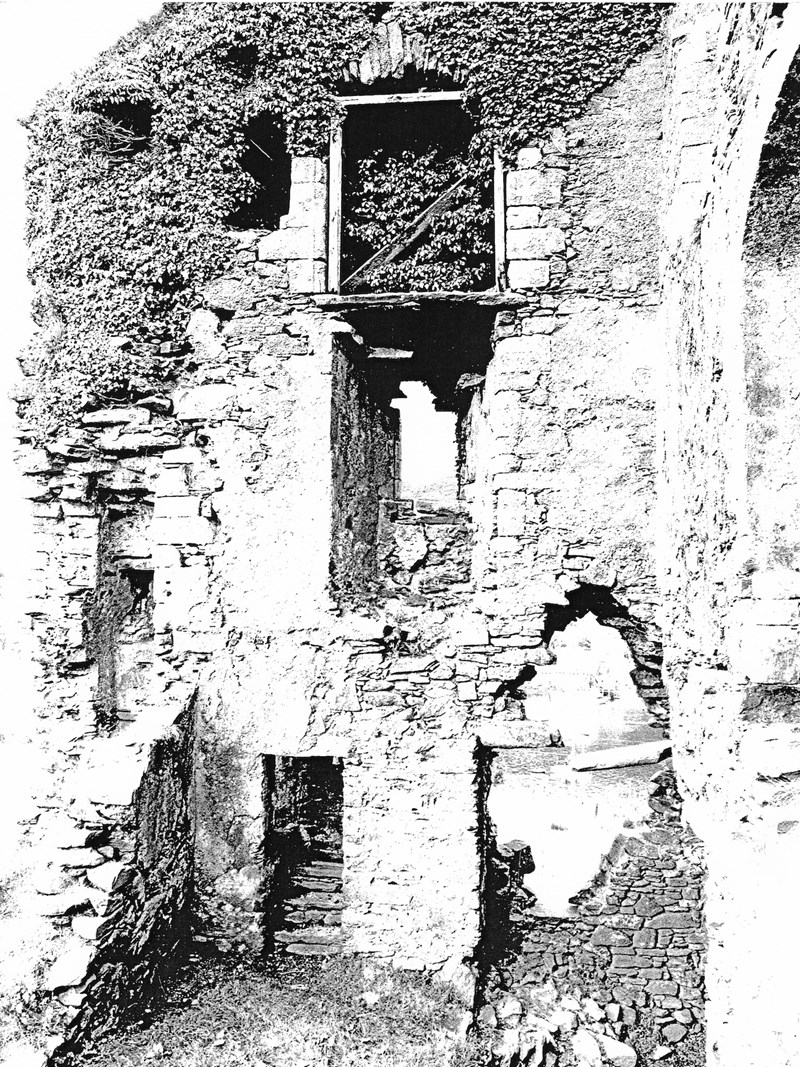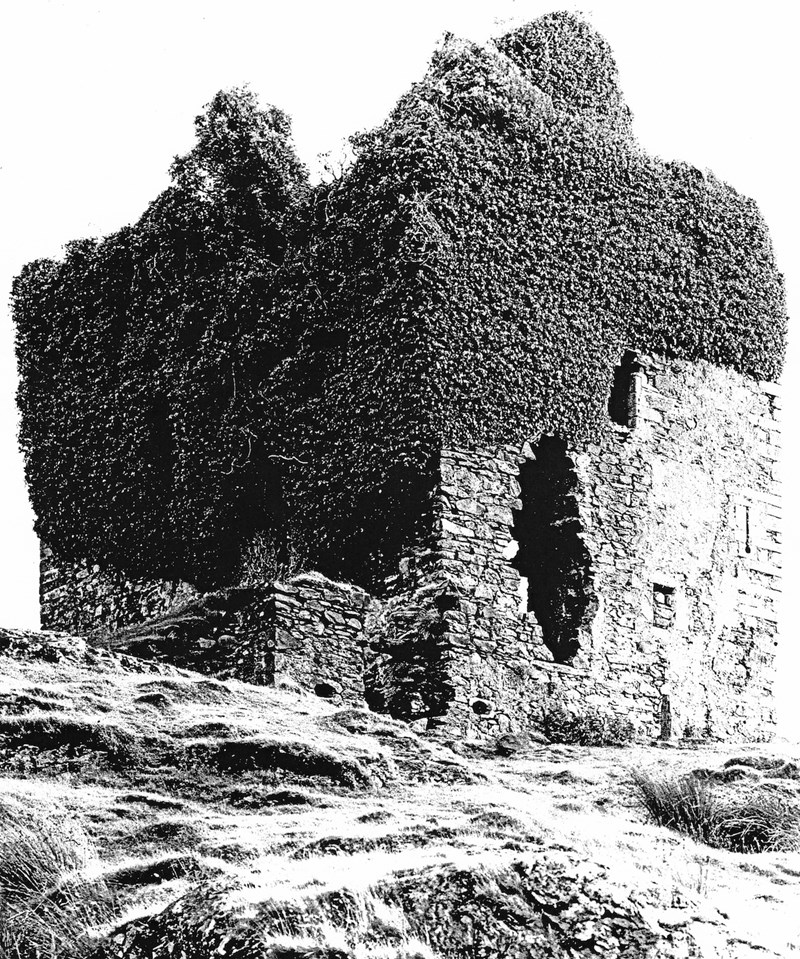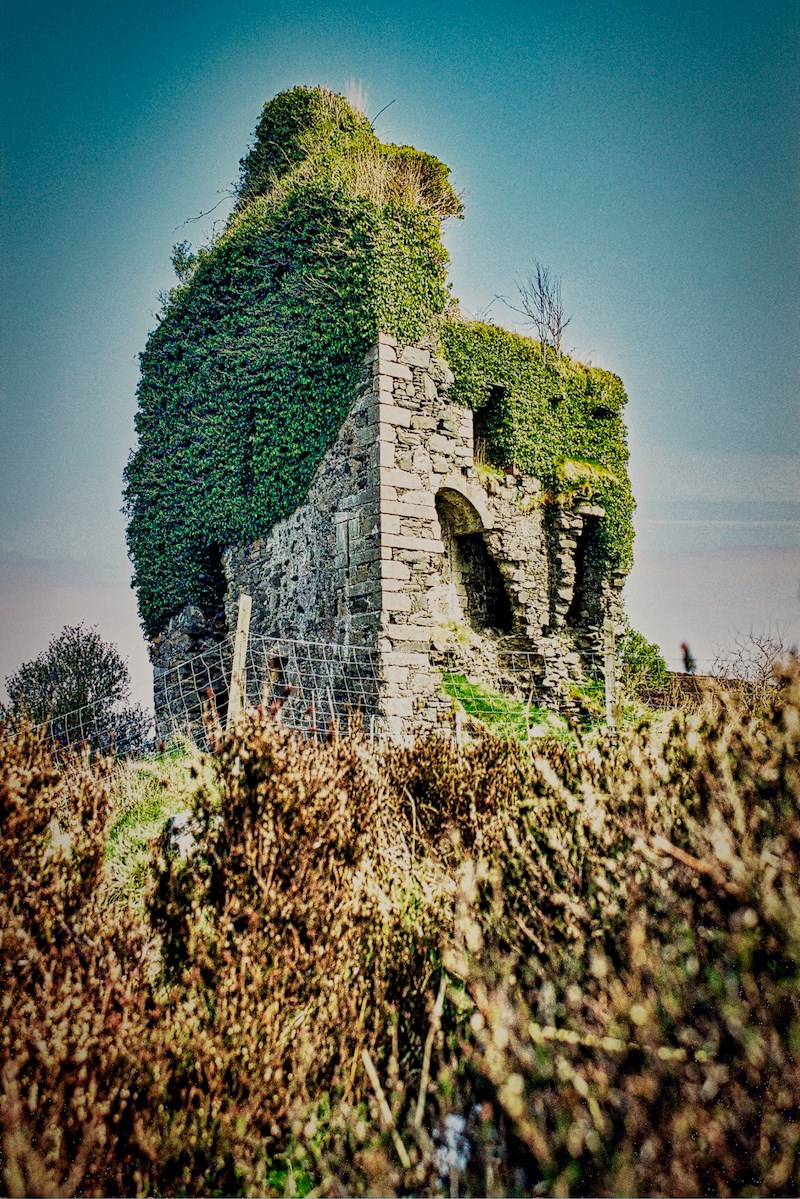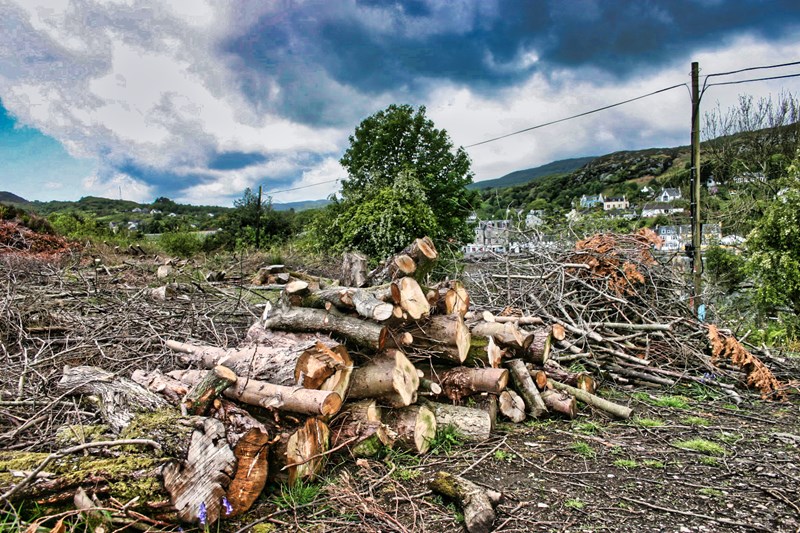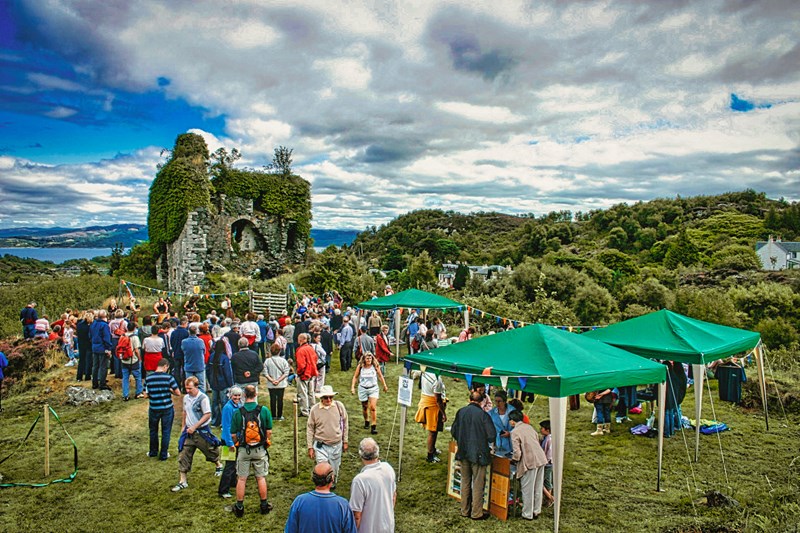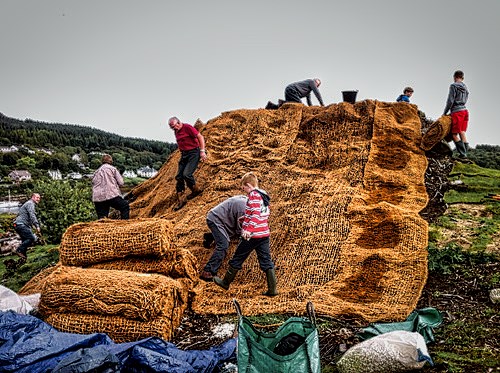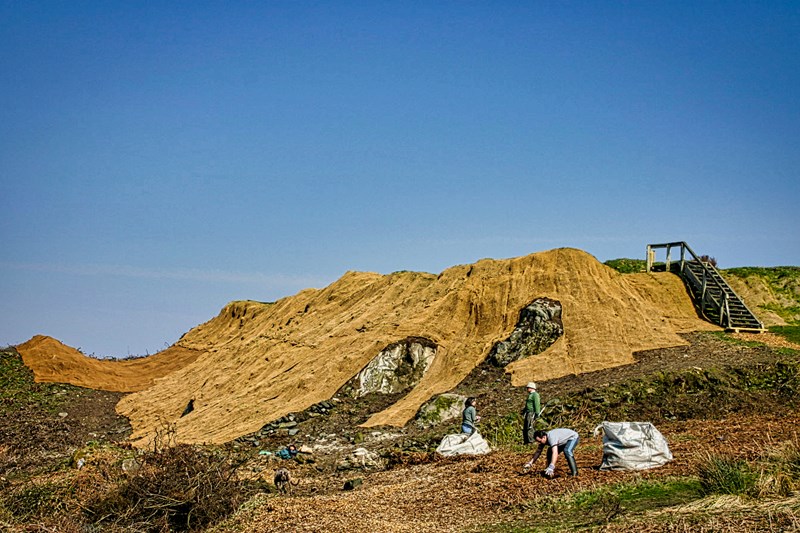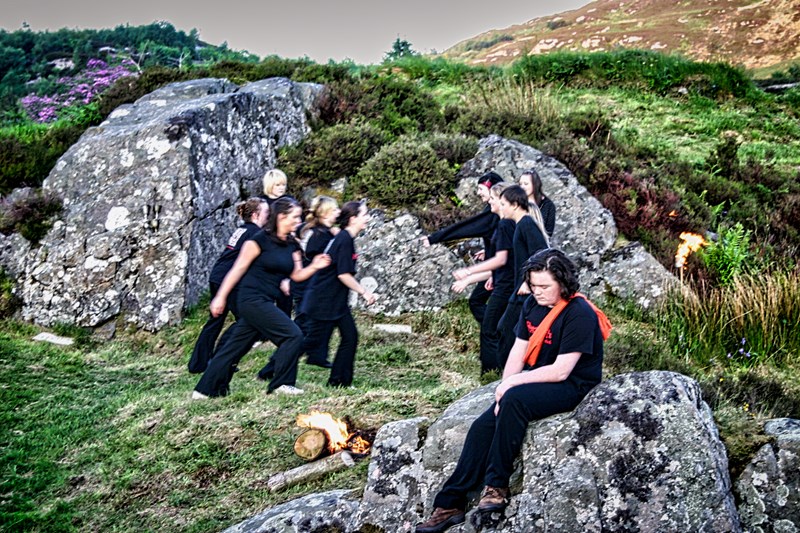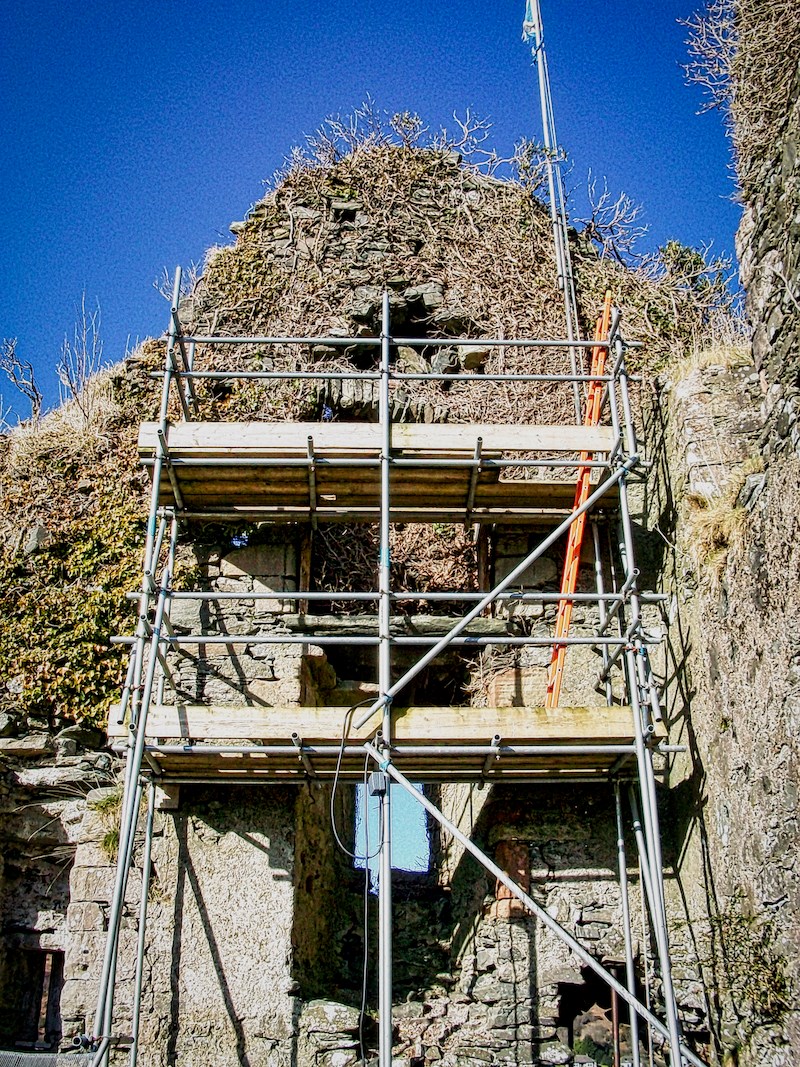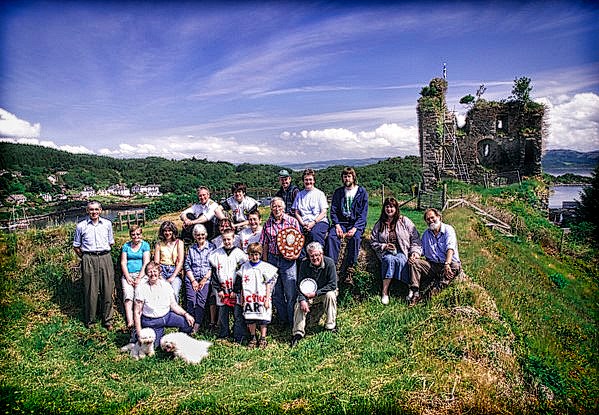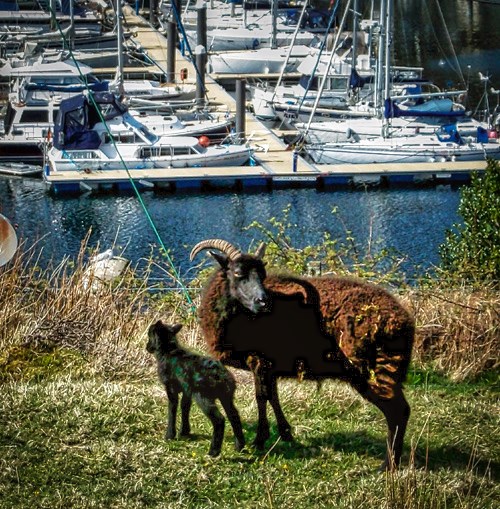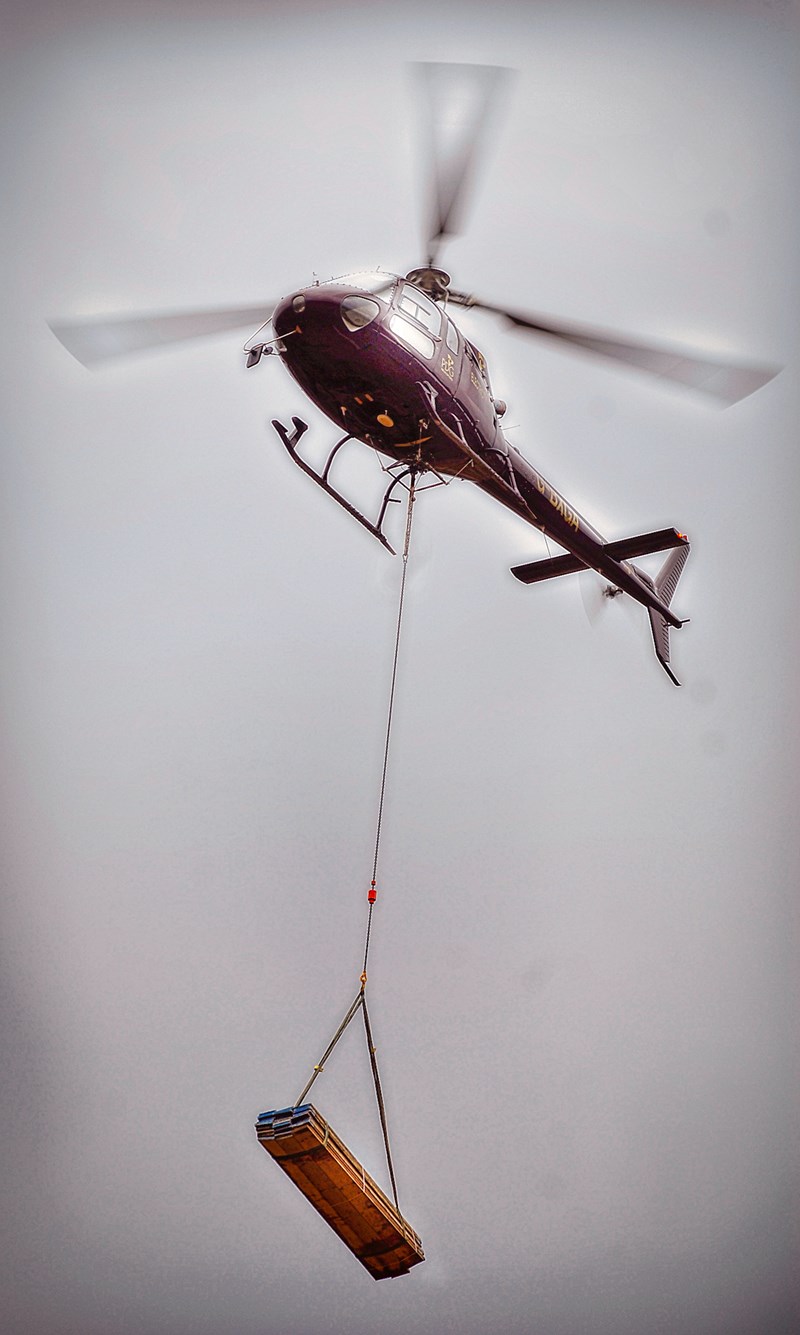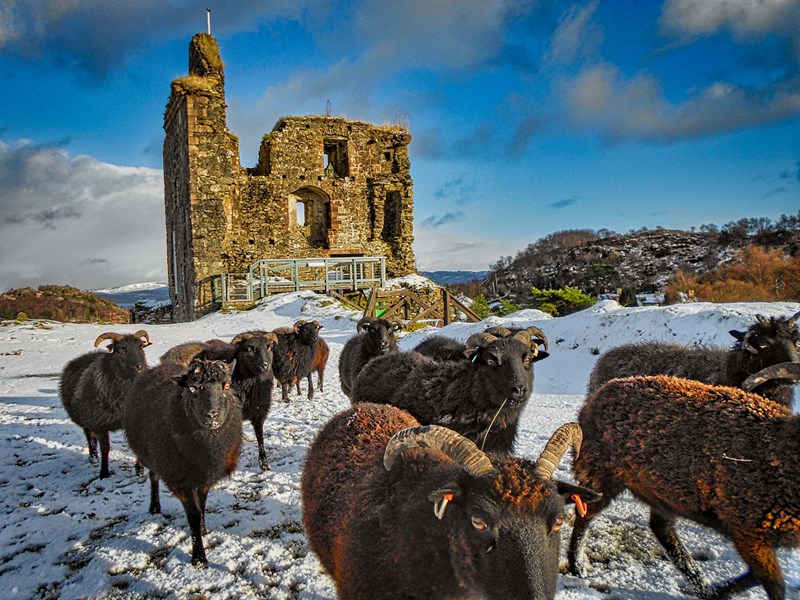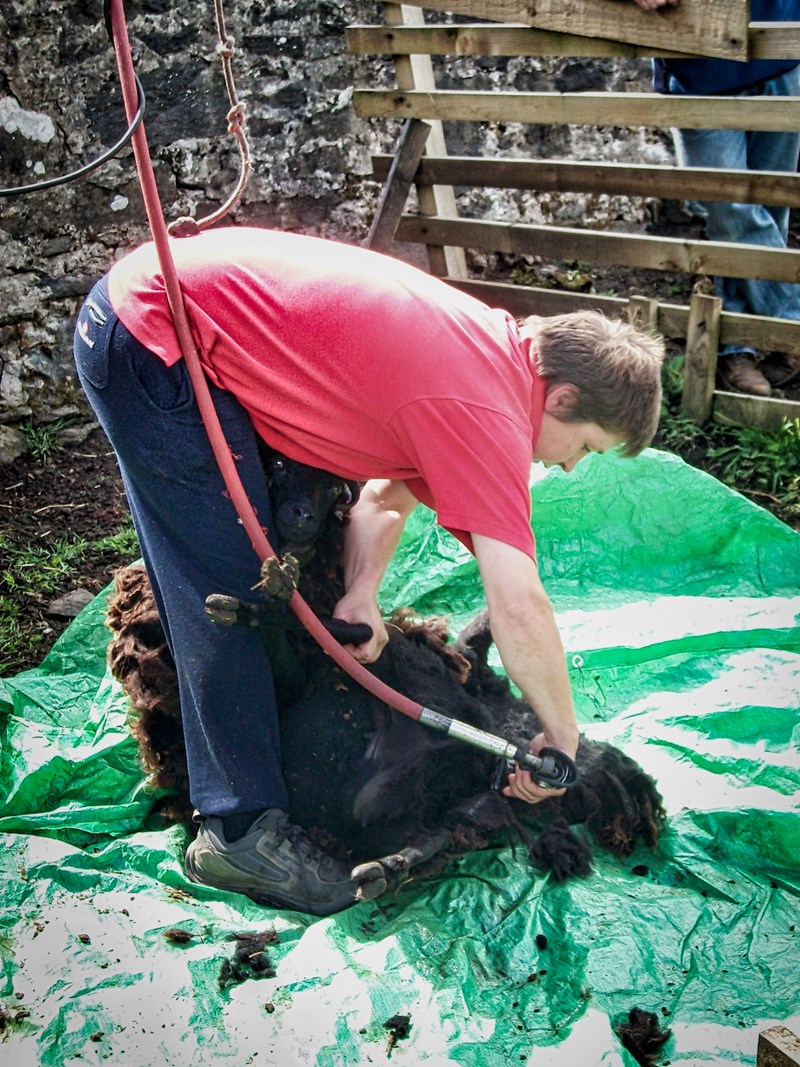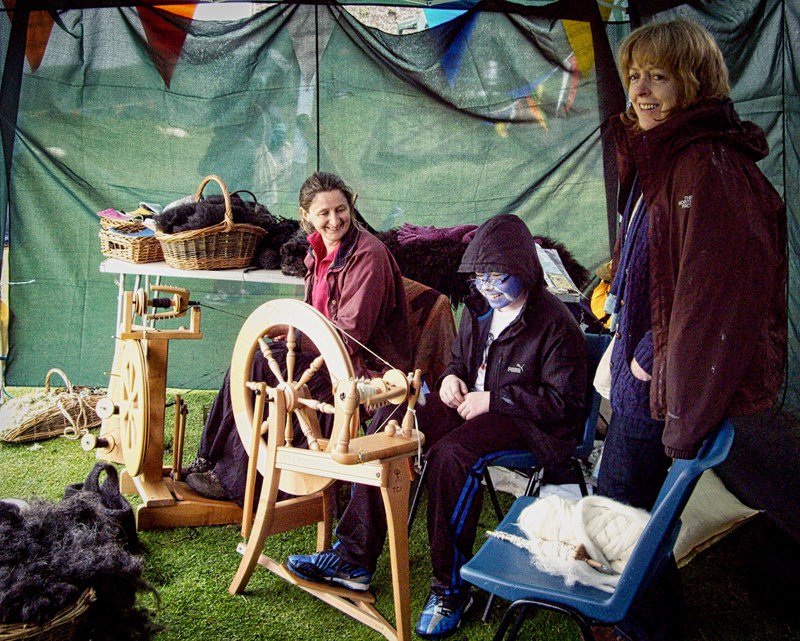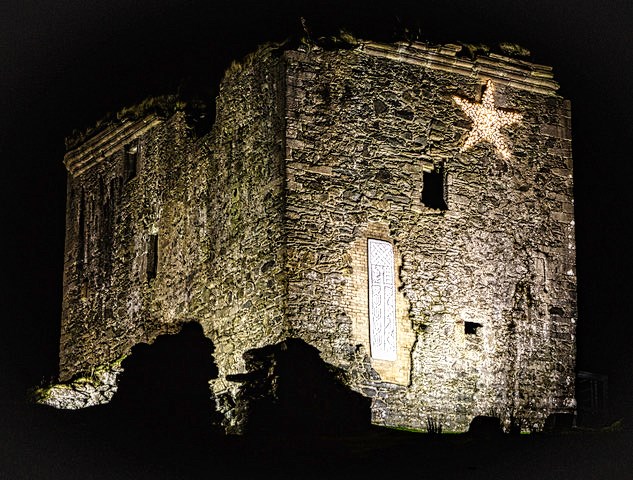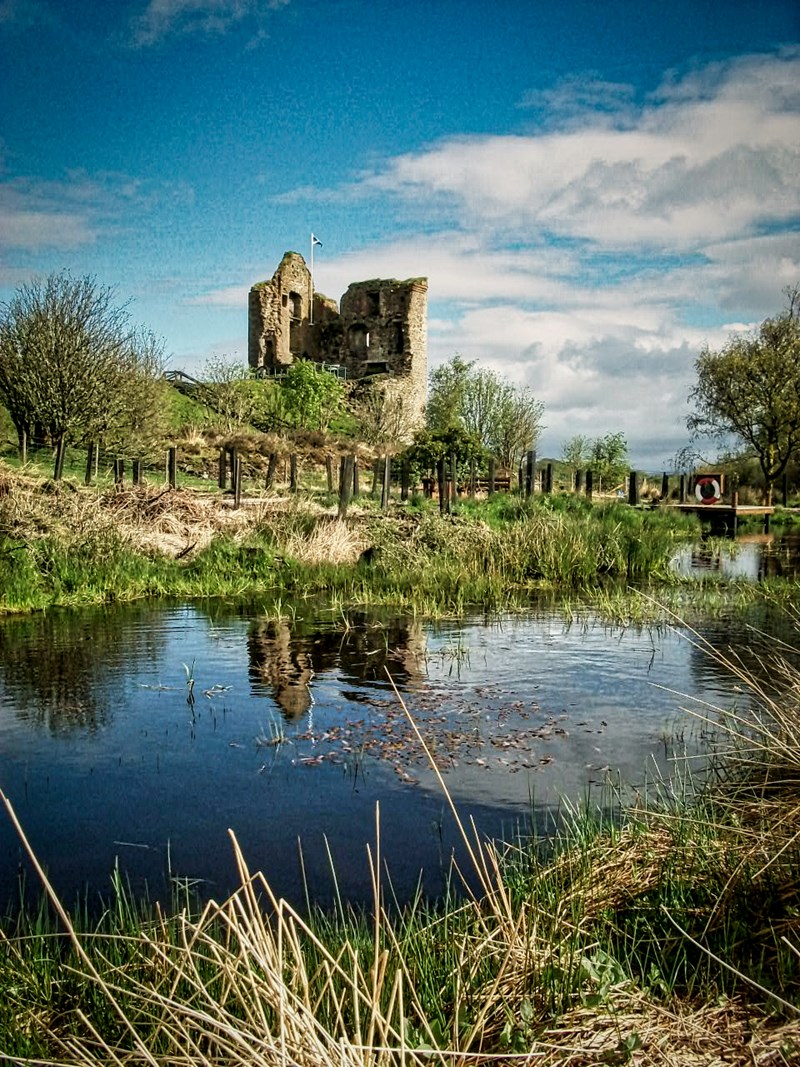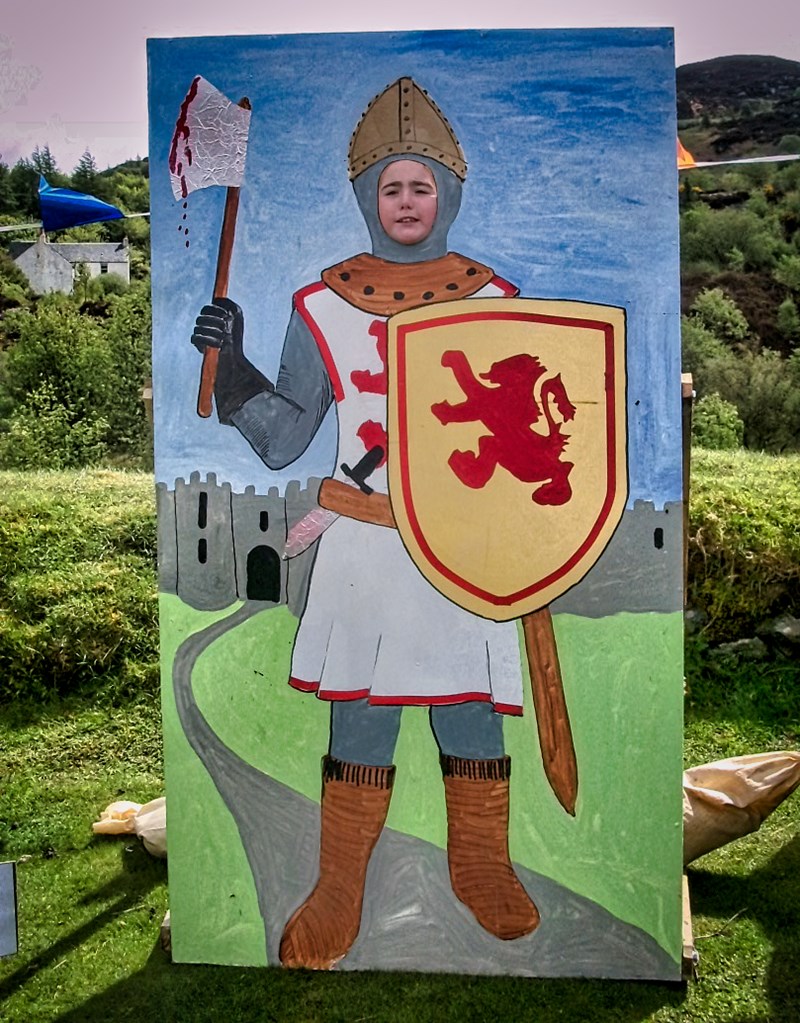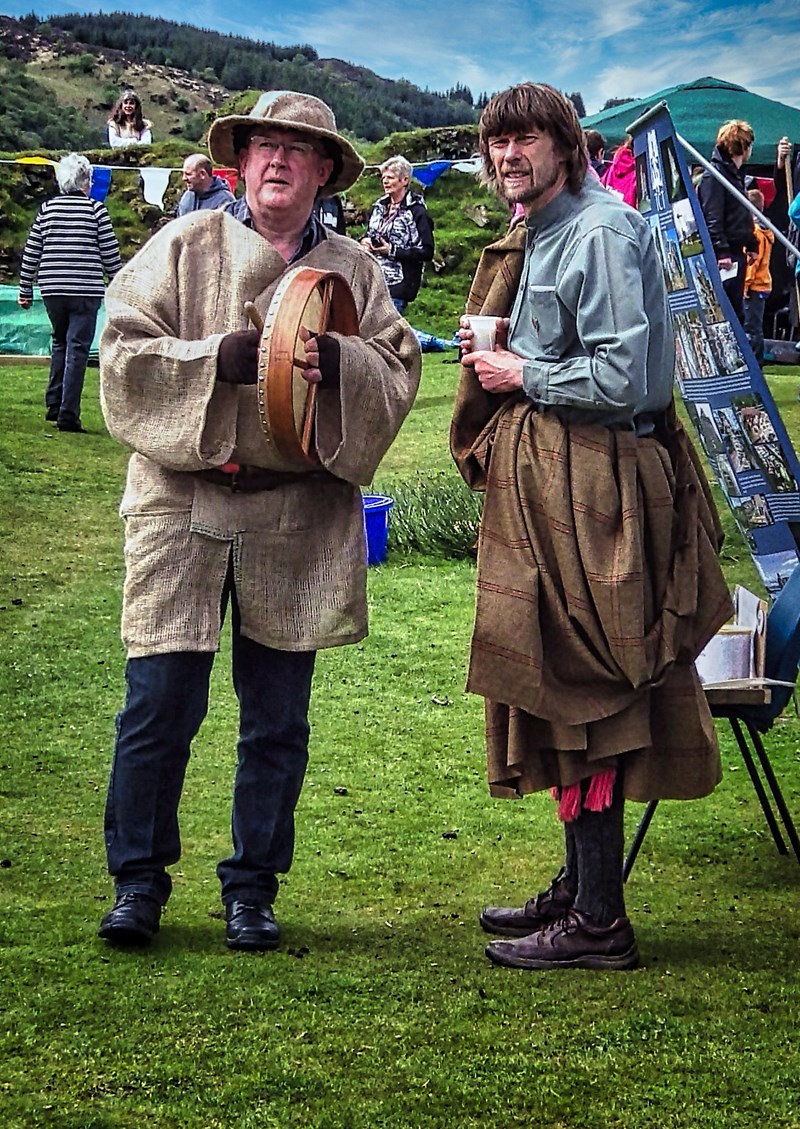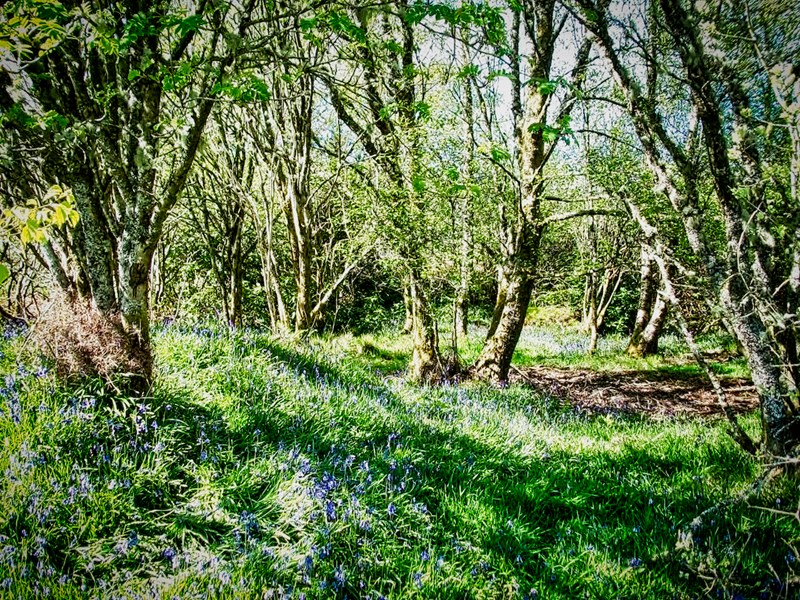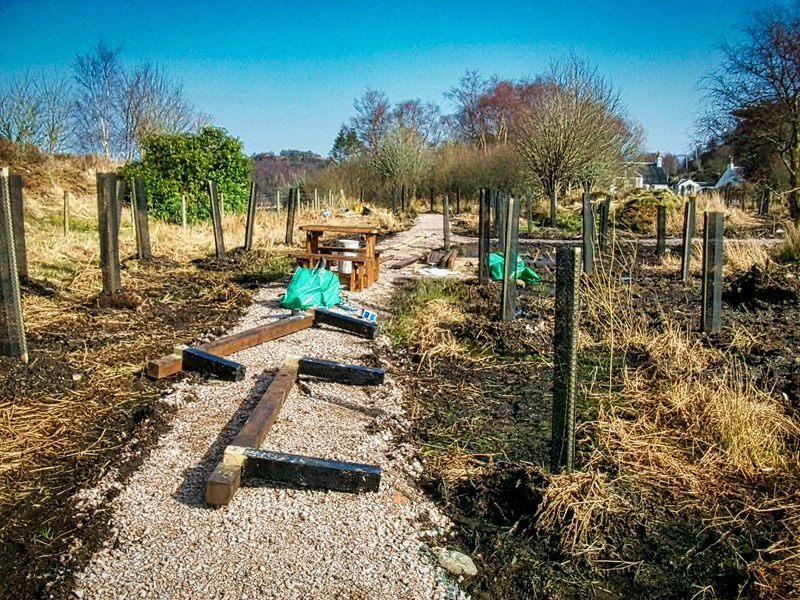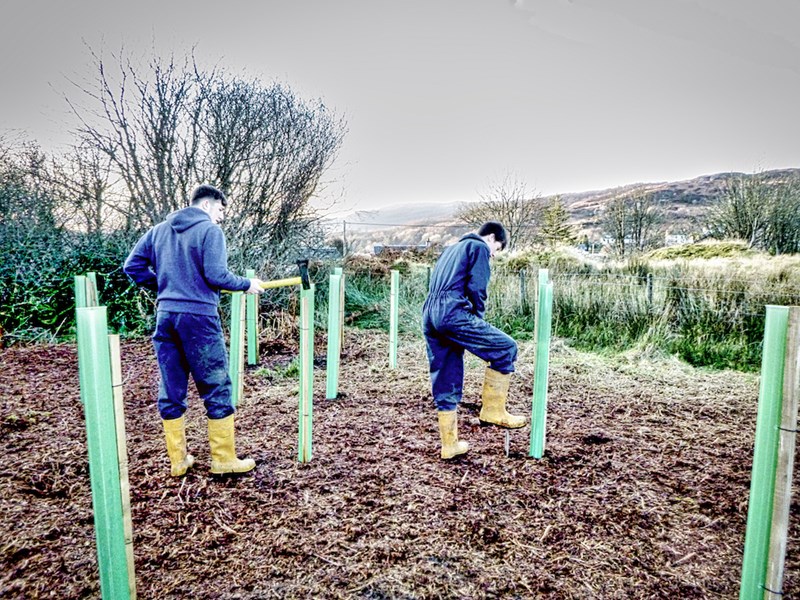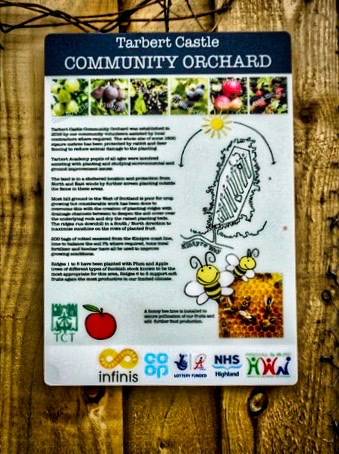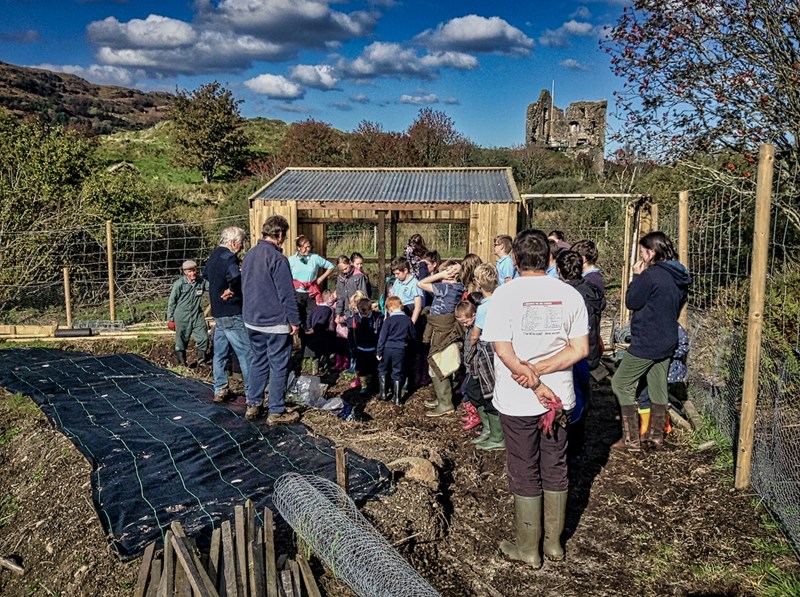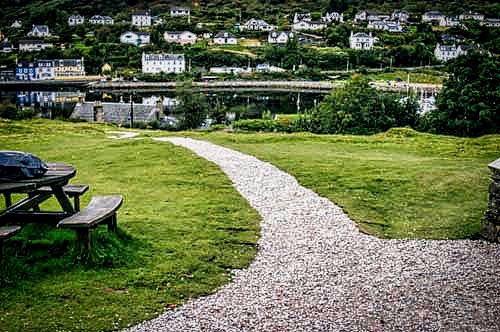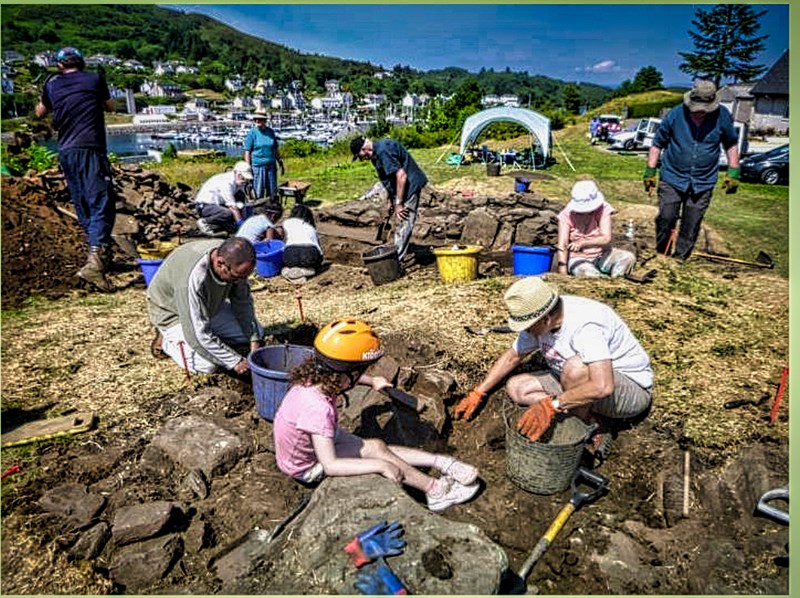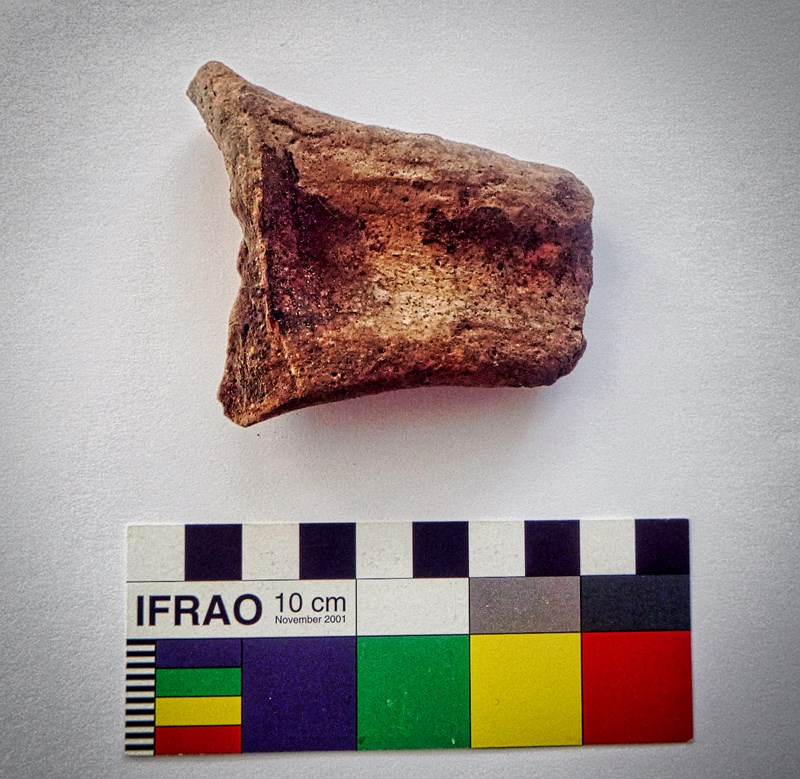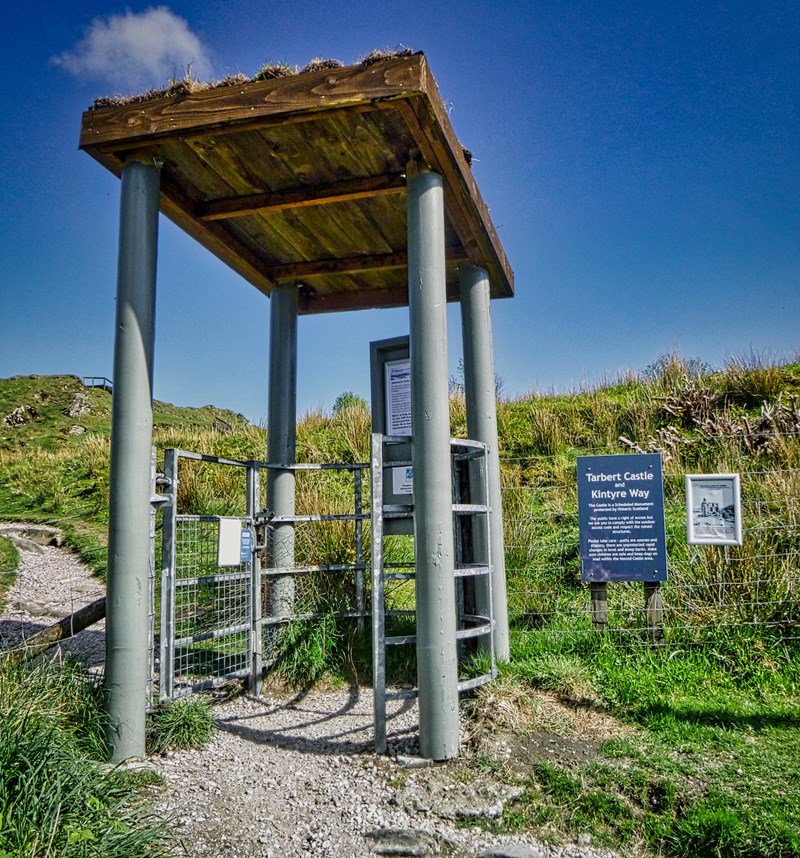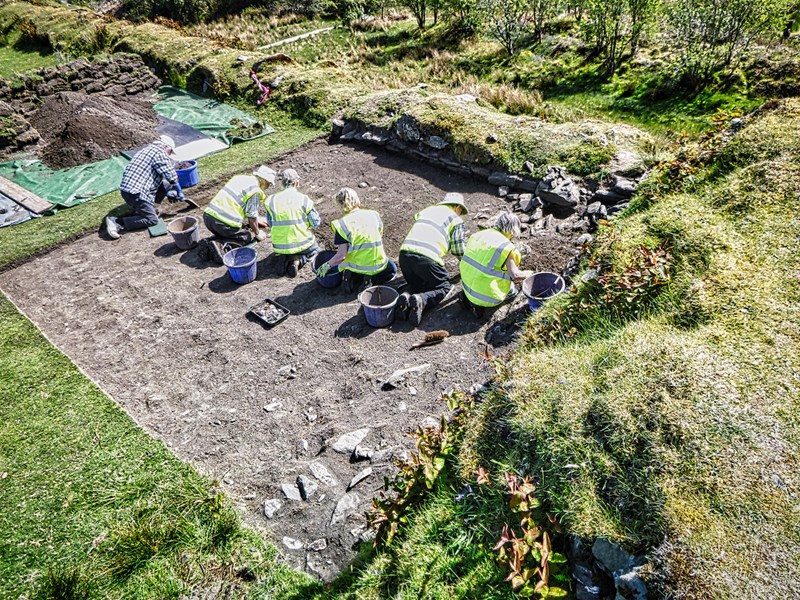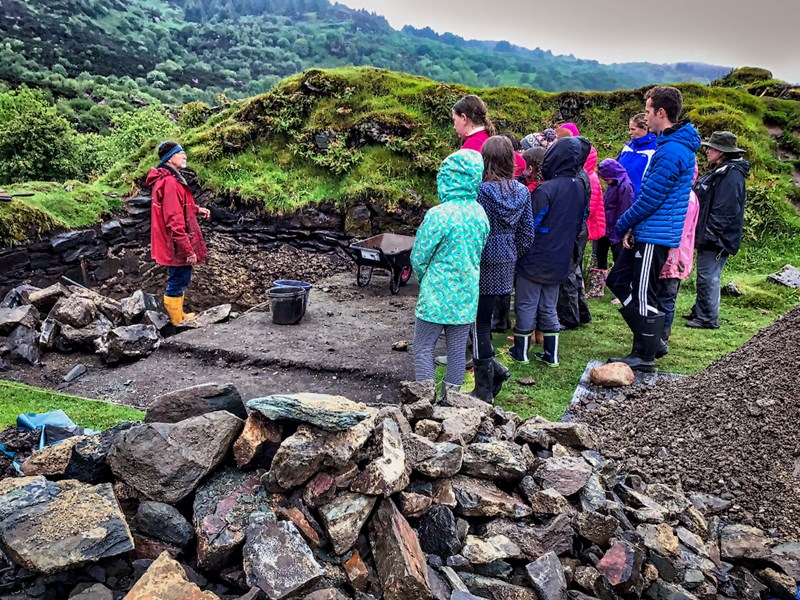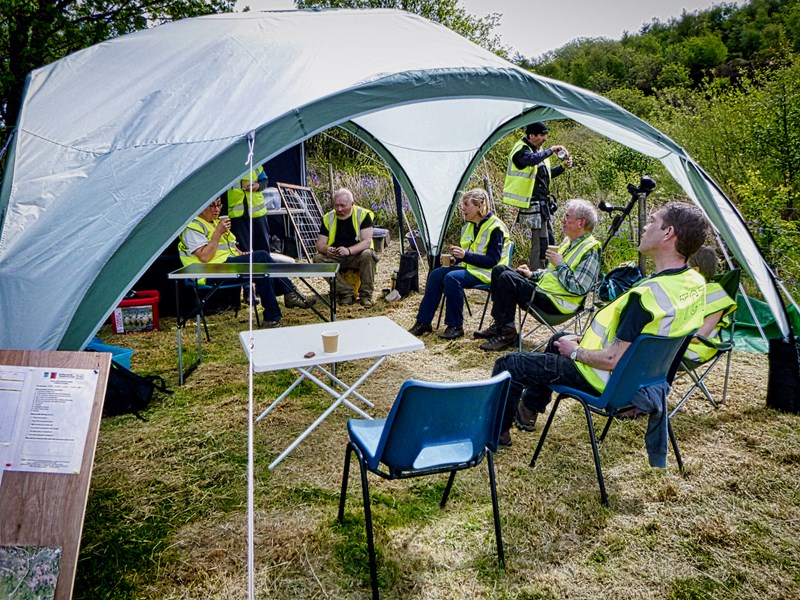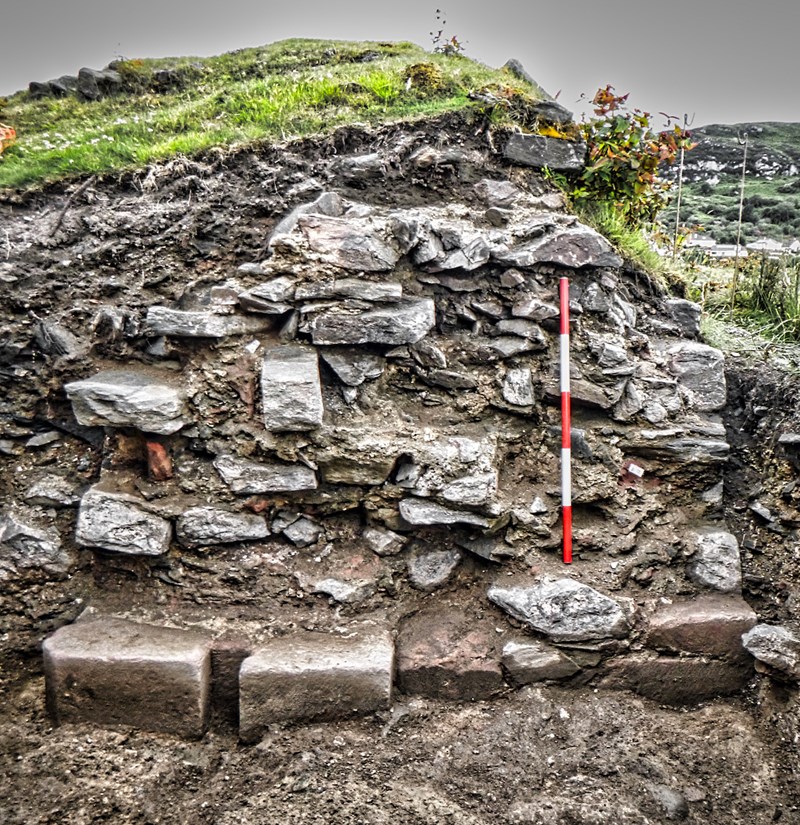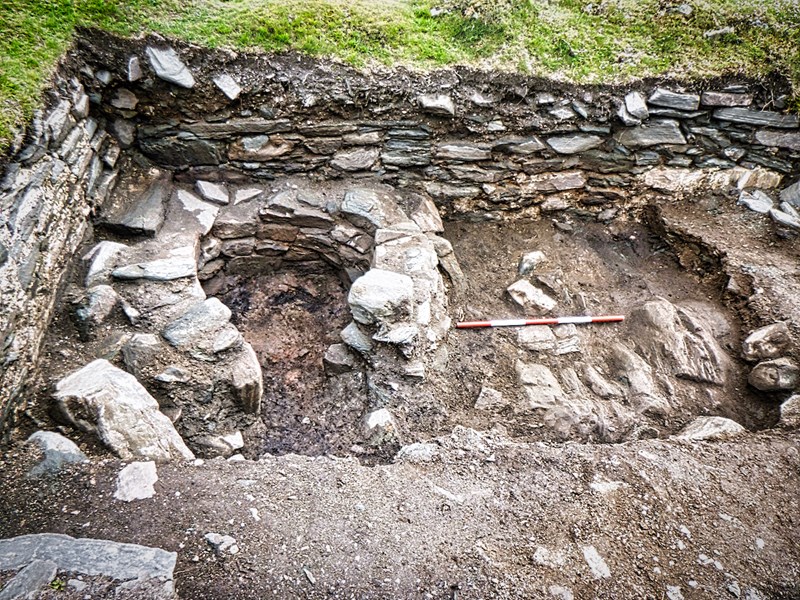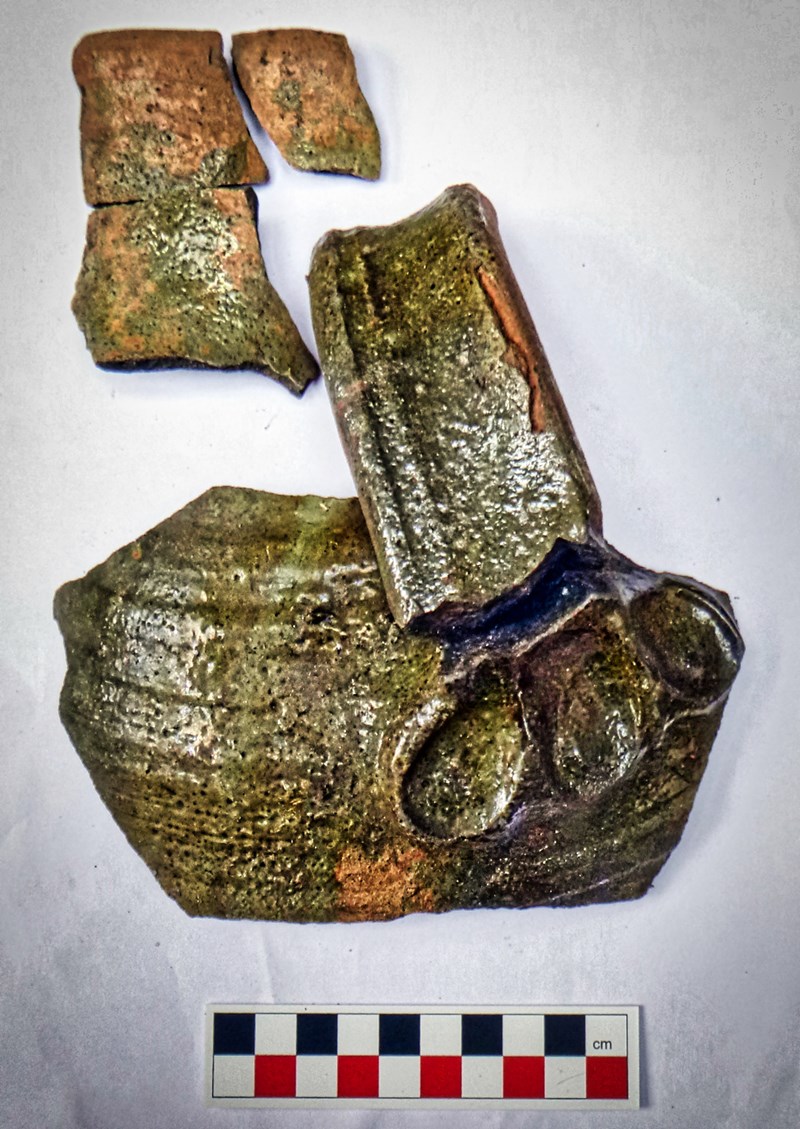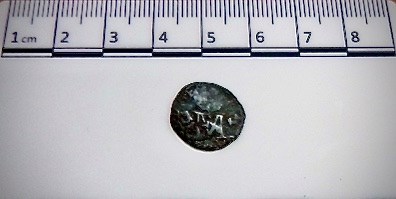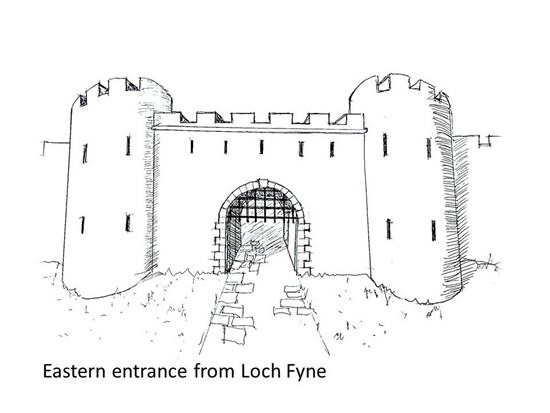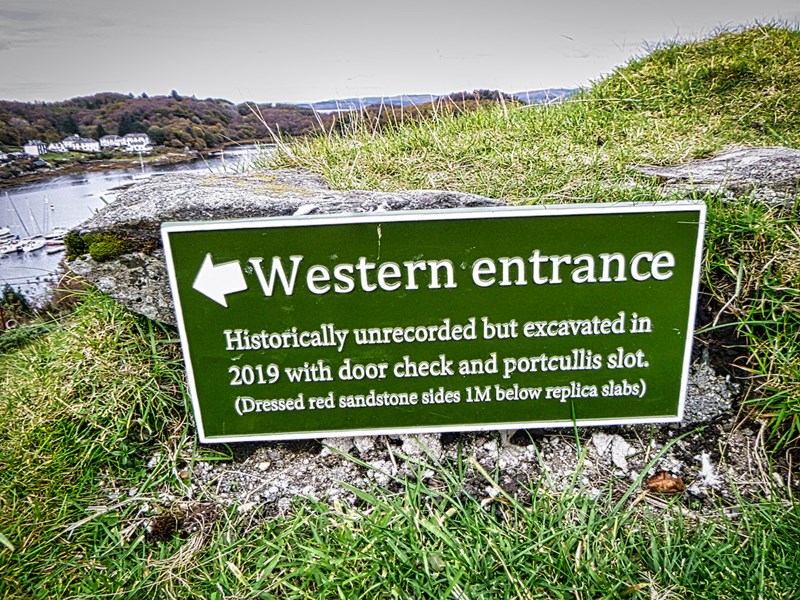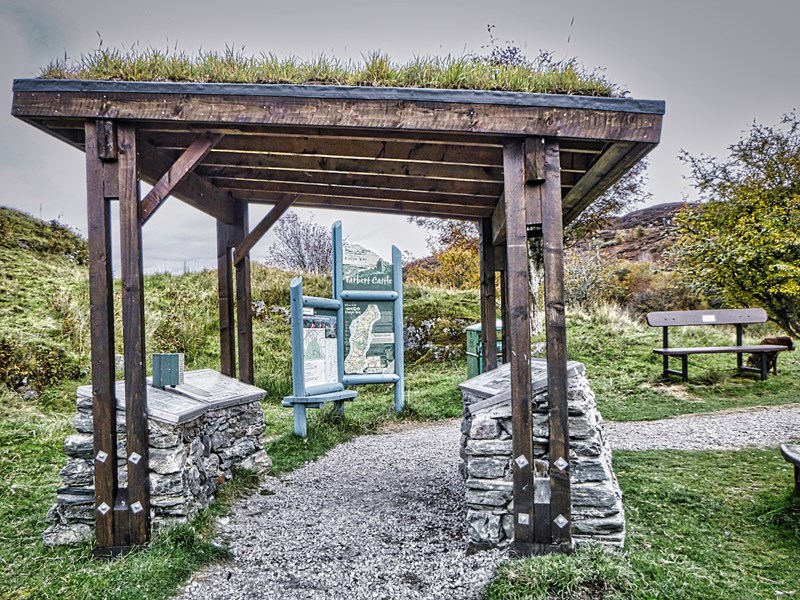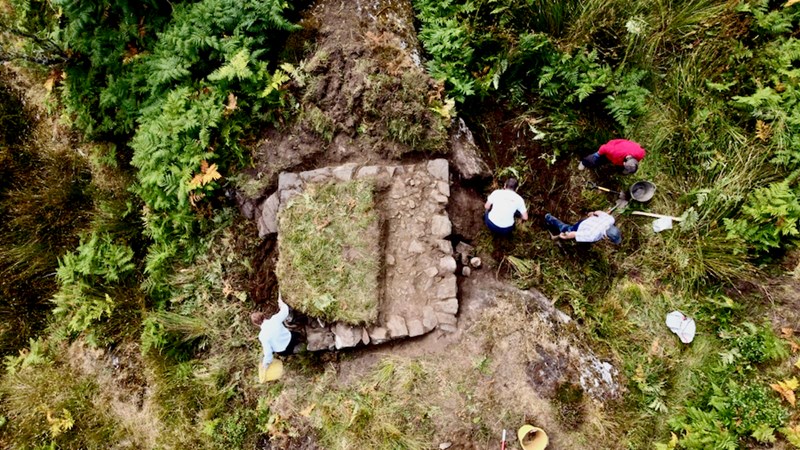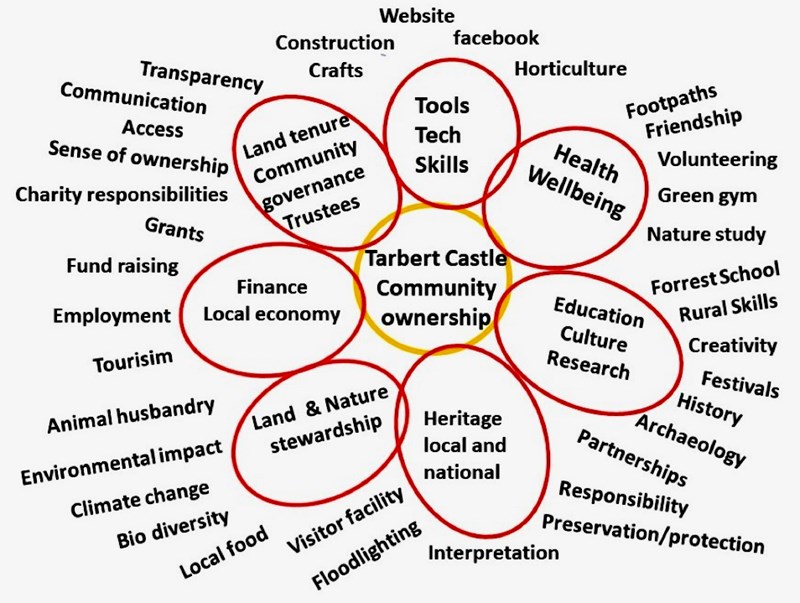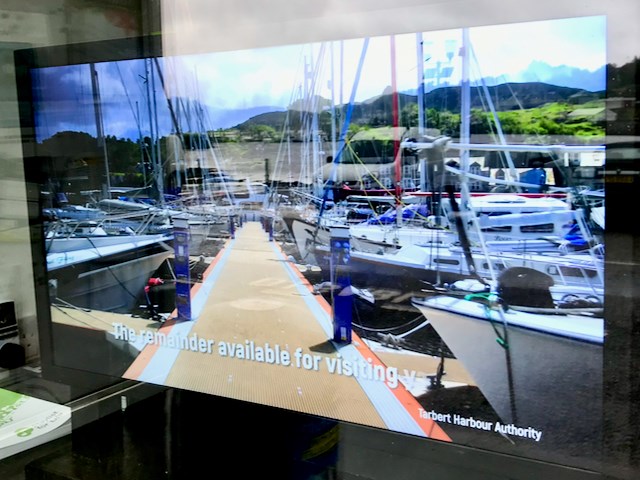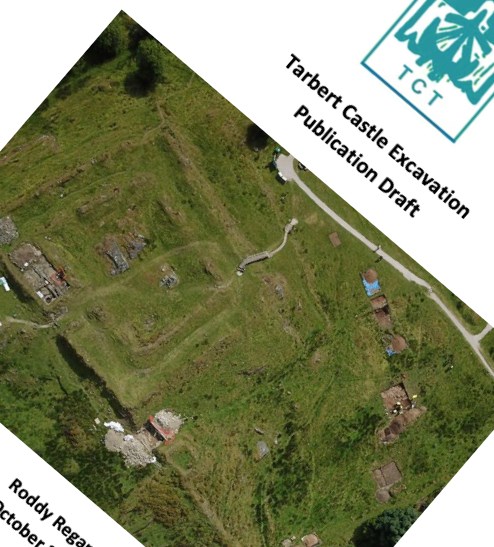Timeline
Late 1950s - late 1980s
Various individuals in the Tarbert community contacted government departments and ministers in the Scottish Office, attempting to drive forward action to repair and make safe the ruins of Tarbert castle. Despite meetings and letters acknowledging the importance of the castle, little action was forthcoming.
1990
A Limited Company Trust was registered, and action started to produce a brochure trying to raise funds.
Information signs were installed, naming features around the castle ruins.
1990 - 2005
A great amount of work was carried out trying to raise funds initially to achieve a feasibility study by experts. Grants were applied for, but major support was not forthcoming. During this period, the group took over ownership of the castle, but the lack of support led to action slowing. The ruins were becoming less stable, with alien vegetation taking over the site, and the Tower House propped and fenced off due to its dangerous condition.
2006
TSCT decided that, as previous approaches to authorities who should have been responsible together with grant organizations had received little or no support, a strategy was developed to take action locally. Tarbert Conservation Initiative (TCI) was formed to achieve a volunteer group willing to carry out work on the ground. Volunteers started clearing vegetation at regular work parties, after Scheduled Monument (SM) consents were applied for and received.
The Castle itself is a Scheduled Monument (ref. SM276), as is the surrounding ground (ref. SM3410), and anything which is done on the site must receive a consent.
Urgent work was carried out to improve access, and the strategically significant Kintyre Way opening ceremony was hosted at the Castle.
2009 - 2012
While normal maintenance and further clearance continued, a major plan to consolidate the Tower House structure at a cost of £750,000 was commenced.
Local organizations and individuals provided loans of £100,000 required as cash flow as grants were paid in retrospect, month by month, as the 3-year on-site contract commenced.
2012
Loans were repaid to the community lenders, and a new organisation - Tarbert Castle Trust (TCT), classed as a Scottish Charitable Incorporated Organisation (SCIO) - was formed to take over the Castle, to ensure its security in community ownership. The TCI volunteers, together with their tools and equipment, were absorbed into this organisation. Those volunteers, as well as continuing on site operations, were to play a major role in future developments. Interpretation panels were permanently installed, with small signage around the site naming visible features. It was becoming obvious that visitor numbers were increasing and, for the first time, these were monitored with people counters, which recorded 15,000 visits during 2012.
2013
The community-owned area includes marshy ground to the south east, behind the Scheduled site, and volunteer work commenced on the reclamation of this by creating a Community Woodland, which includes a wildlife pond creating diverse habitats. In preparation for future archaeological exploration, Roddy Regan, our consultant archaeologist, prepared a desk-based assessment of known facts about the castle, and a full non-invasive survey of the site (see document on the Archaeology page of this website).........
2014
The Community Woodland was established, with 700 trees planted, paths formed, and picnic tables installed, all accessed via gates from the Castle area itself. Tarbert Academy junior pupils began using the woodland area for "forest school" activities.
2016
Woodland sculptures were added to the woodland, and a further 100 trees planted. We started working with Tarbert Academy, giving children experience in outdoor work, and this has developed into providing the practical activity for Rural Skills courses within the secondary pupils' curriculum.
.....Also, to improve the visitor experience and encourage donations, we constructed a distinctive and sympathetic new canopy over the arrival gateway from Harbour Street below. That's a turfed roof, by the way.
.....Full details of the dig outcomes are available on our Archaeology page (on our menu, go to Castle > Archaeology).
..........Despite the limitations on volunteers during the worldwide COVID-19 pandemic, we updated on-site interpretation facilities, installing additional interpretive panels below a new shelter canopy in order to enhance the visitor experience.
That's another turfed roof.
A new path is planned in the woodland, and further trees will be planted.
2021
Although COVID-19 continued to restrict our operations, our volunteers were undaunted, and - respecting distance, and taking other precautions - continued to form highly effective work parties for maintenance sessions.
We carried out a further, small, archaeological excavation, this time at a location near the head of West Loch Tarbert, where, according to the Exchequer Rolls of King Robert the Bruce, there had been expenditure on the construction of a ”peel” - a small, square, defensive tower. We found a stone platform, and further research revealed that, in the 13th century, a clear view of the Castle battlements would have been possible, allowing the use of signals between the two locations, e.g. to warn Castle personnel of the arrival of potentially hostile ships nearing the head of West Loch Tarbert.
This dig will be included in our Archaeologist's research report, which has been delayed by Covid, but which, we hope, will be published soon....
...In the summer months of 2021, visitor numbers recovered as the Covid threat receded.
The Castle Trust asked Historic Environment Scotland to deliver a presentation on ”Heritage Volunteering & Climate Change”, as the Trust's contribution to the global COP26 conference in Glasgow. This enabled us to reassess what we had achieved to date, and the resultant diagram, summarising our activities, was presented and discussed at an online meeting of volunteer-supported national heritage organisations.
2022
In January 2022, we added a new stats facility for our website tarbertcastle.info. By August, we were pleased to note that the website had already welcomed 2,100 unique visitors since the beginning of the year. Of course, it's in the nature of the internet that the figure quoted includes representation from a wide range of countries around the globe, so we look forward to making many new friends as word gets around and international travel gradually returns to something resembling normal.
As 2022 progressed, we explored further the ways in which technology can assist us. Drawing upon the drone photography skills of one of our younger volunteers, we worked with Tarbert (Loch Fyne) Harbour Authority (THA) as partners in the preparation of a new video.
The short production, which you can watch on our Home page, promotes not-for-profit organisations in our village.
As of September, the recording was showing also via window-displayed high-brightness monitor screens at two locations in the village - the Marina laundry (adjacent to the walkway leading to the THA Pontoons) and the public library in Harbour Street.
The new video is available also on YouTube, and is chock full of superb footage showcasing our fine and historic West Coast fishing village, our Castle Heritage Park, and the scenic territory of North Kintyre and South Knapdale. It's a must-see for anyone newly arrived in Tarbert, as well as for those who have not yet had the pleasure of visiting in person.
The video is:-
All rights reserved ©flyingscotscam 2022
and produced by:-
www.flyingscotscam.org
In Autumn 2022, we received, from our archaeologist Roddy Regan, his final report of our 2019 Community Archeological Dig - the “Our Castle of Kings” project. It makes for fascinating reading, and brings alive the tumbled masonry and grassy knolls of the Castle as we know it today. The report can be found here.
3 MARCH 2025
Over the last couple of work parties, we’ve been busy clearing up after the storm and preparing for the new growing season. In the orchard, we’ve been clearing brambles which take a hold and spread so readily. They need to be dug up to remove the roots, because, if you cut them back, they just grow even more vigorously!
We’ve also been applying mulch and manure to the soft fruit, to give them an extra boost.
Our next big structural job is renovating the viewing platform. Wood that needs to be replaced in the handrails, steps, etc., and, although it will mean shutting off the platform for a few days, it'll then be back in service and renovated ready for the summer.
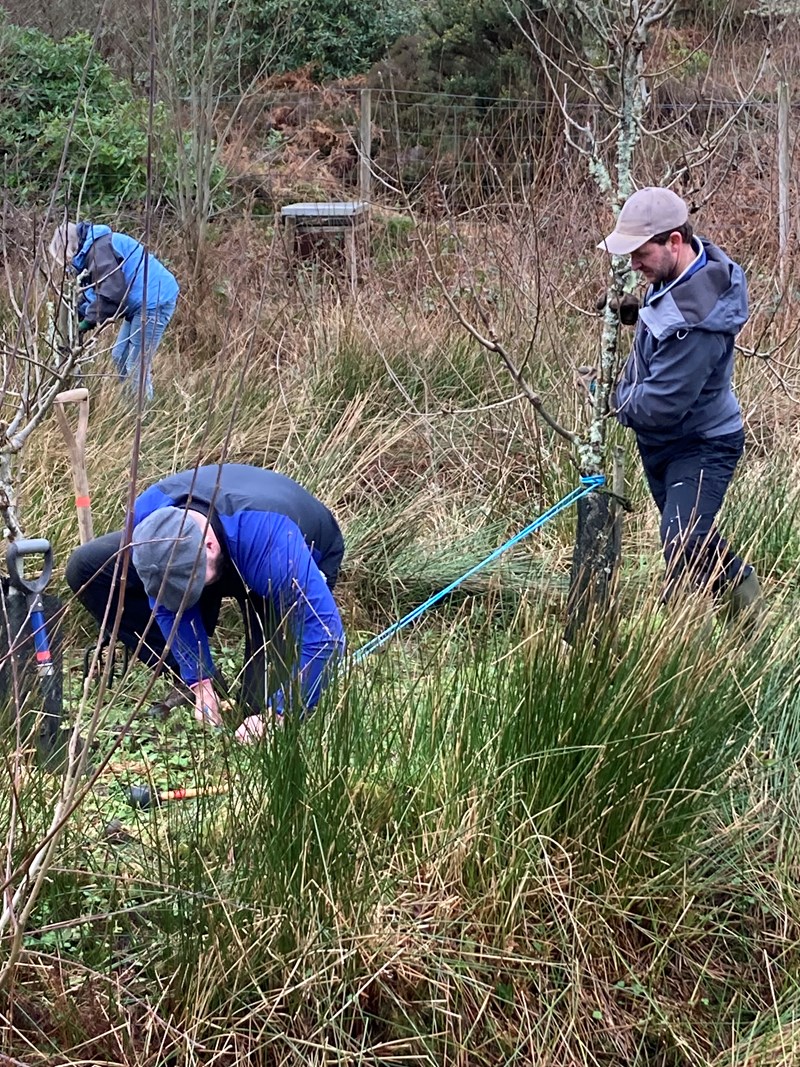
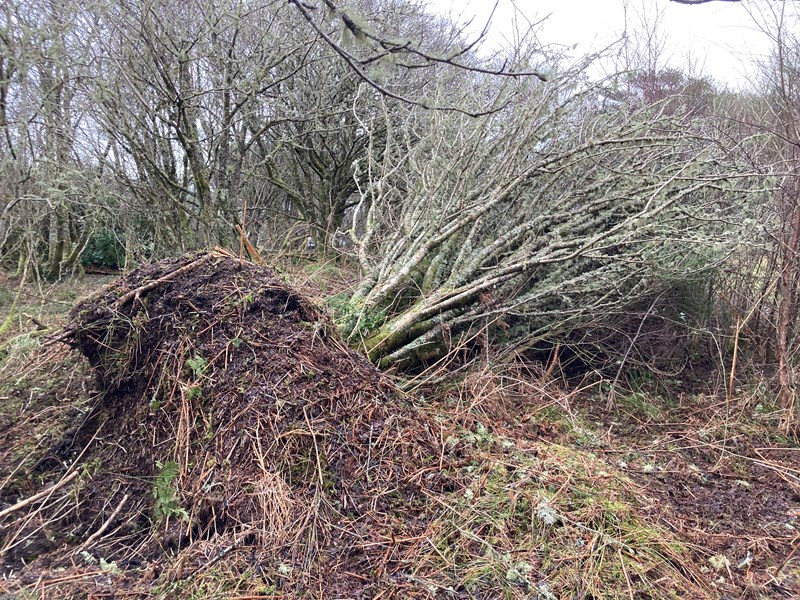
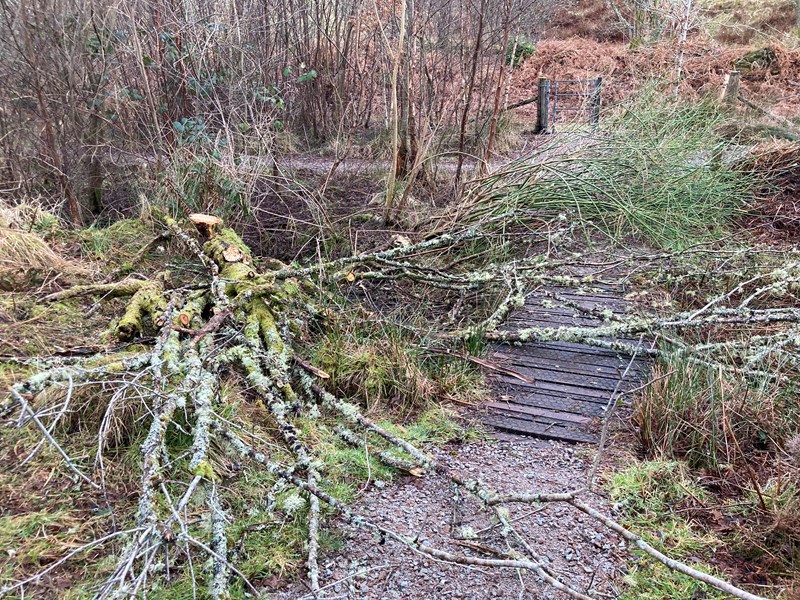
14 APRIL 2025
We've been busy.
The flag is up at the castle, so Spring must be here. We had beautiful weather for our work party, and it was lovely to be working outside. Volunteers started renovating the castle viewing platform, and work on replacing the handrail was completed this Saturday (12 April 2025). The wood still needs painting, but it is looking good.
Volunteers also worked in the orchard, mainly with the blueberry bushes, weeding and feeding them to encourage growth and fruit. The gooseberry bushes are looking good, with lots of new growth and flowers.
The grass is growing well now, and this week we will be stopping feeding the sheep for the summer. One family, who have been feeding the sheep every week over the winter for 12 years, have done their last shift, as they are moving to Inverness this year. We are very grateful for their years of dedication, and will be looking for more volunteers for feeding the sheep in the autumn.


